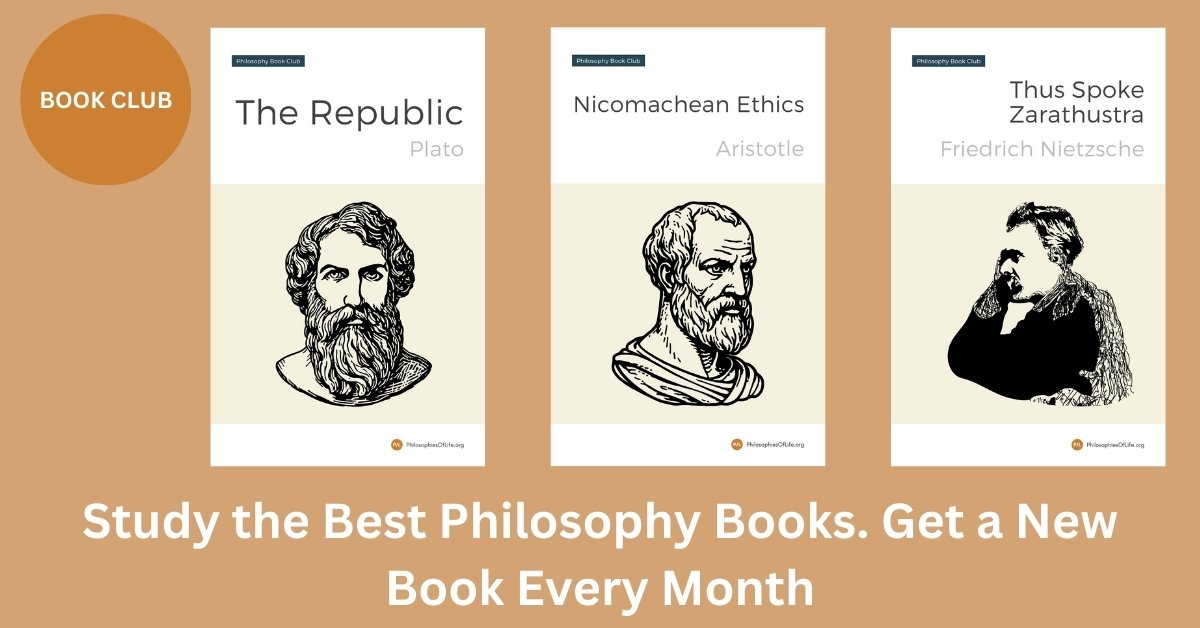The study of philosophy often serves as a pathway for individuals seeking to lead a more meaningful and enriched life. However, the vast amount of information available can be overwhelming, making it difficult to focus on key concepts. This article aims to return to the essentials, particularly by examining the philosophy of Jean Baudrillard and his concept of media as simulation. By gaining a deeper understanding of this idea, we can uncover its impact on how philosophy can guide us toward a more purposeful existence.
Key features of Jean Baudrillard’s philosophy
Jean Baudrillard was a French philosopher and sociologist best known for his theories on hyperreality and simulations. At the core of his philosophy is the idea that in today’s world, reality is deeply intertwined with representations or simulations, to the point where it becomes hard to differentiate between the real and the simulated. This happens because signs and symbols—like media images, advertisements, and cultural narratives—create a version of reality that people perceive as more real than reality itself.
Baudrillard’s concept of hyperreality explains how society increasingly interacts with these constructed realities instead of the authentic, physical world. For instance, in popular culture, he argued that things like television or film don’t just reflect reality but replace it with a “hyperreal” version. This leads to what he called the “death of the real,” where the boundary between reality and fiction is blurred.
He also critiqued consumer society, suggesting that goods are no longer valued for their use but for the meanings or status they symbolize. This shifts focus from need-based consumption to identity-based consumption. Overall, Baudrillard’s work challenges us to question how much of what we see and experience is truly authentic and how much is shaped by media and culture. His ideas remain highly influential for understanding modern life, particularly in the context of technology, advertising, and mass communication.
What is media as simulation?
Jean Baudrillard, a French philosopher and sociologist, developed a concept of media as simulation, arguing that in modern society, media no longer represents reality but creates its own kind of reality. According to Baudrillard, media does not merely reflect the world around us; instead, it constructs what he called “simulacra.” Simulacra are representations or images that have no basis in actual reality and are purely self-referential.
Baudrillard believed that in this system of simulation, the boundary between the real world and the artificial constructions of media becomes blurred. Over time, people may lose the ability to distinguish between what is real and what is simulated. Instead of revealing or representing the truth, media functions to create its own version of reality—one that often prioritizes appearance over substance. This process leads to what Baudrillard referred to as “hyperreality,” where the simulation becomes more real to people than reality itself.
For Baudrillard, the media’s role in shaping perception is so dominant that it reshapes how individuals see and interpret the world. He suggested that media simulations have taken over as the primary way people experience and understand everyday life. This perspective challenges the common belief that media provides a window to reality, instead portraying it as a system of artificial constructs that eclipse the real world.
This example helps to demonstrate this philosophical perspective. Consider a popular reality television show that claims to depict the everyday lives of individuals. On the surface, these shows appear to present unscripted and authentic moments, but in reality, they are often carefully crafted and edited to maximize entertainment value. The behaviours, interactions, and even conflicts shown are chosen to fit a specific narrative. This constructed version of reality becomes so widely consumed and accepted that audiences may start to perceive it as a genuine representation of people’s lives. Over time, the line between what is real and what is simulated begins to blur, leading people to confuse the manufactured storyline with actual reality. Such a situation reflects how media can create a version of the world that seems real but is, in fact, a reproduction shaped by external influences rather than an accurate portrayal of life itself.
Challenges to Jean Baudrillard’s view about media as simulation
Philosophers who object to or reject Jean Baudrillard’s perspective on media as simulation often do so because they find his views overly pessimistic, abstract, or disconnected from practical realities. One common critique is that Baudrillard’s perspective seems to dismiss the possibility of meaningful engagement with media. Critics argue that media can serve as a space for genuine communication, education, and social change. By focusing solely on media’s supposed superficiality and separation from “reality,” Baudrillard’s approach risks ignoring the positive roles media can play in people’s lives.
Another objection comes from philosophers who believe Baudrillard’s arguments lack empirical grounding. His theories tend to be highly theoretical, often rooted in abstract concepts rather than practical evidence. Detractors feel that this speculative approach makes it difficult to test or apply his ideas in real-world scenarios, leading many to question their relevance. Without concrete support, some philosophers argue that Baudrillard’s claims about media are more provocative than they are accurate or useful.
Additionally, some scholars take issue with Baudrillard’s apparent dismissal of the concept of “objective reality.” While Baudrillard questions whether a true, stable reality even exists outside of media representations, critics argue that this view can lead to a kind of intellectual nihilism. If one dismisses objective reality altogether, it becomes challenging to engage in productive discussions about truth, ethics, or social responsibility—concepts that require acknowledgment of a shared reality to have meaning.
Lastly, philosophers have noted that Baudrillard’s perspective doesn’t adequately account for audience agency. Critics argue that his view of media often treats people as passive consumers who are wholly manipulated by the simulation. This perspective, according to critics, undermines the ability of individuals to think critically and interact with media in more nuanced ways. Many philosophers highlight the active role that audiences play in interpreting, rejecting, or even reshaping the messages they receive from media, which contradicts the deterministic tone of Baudrillard’s work.
Overall, these objections stem from concerns about the limitations, practicality, and implications of Baudrillard’s theories and their relevance to understanding media in contemporary society.
Why media as simulation is important to Jean Baudrillard’s philosophy
These are some of the main reasons why grasping the concept of media as simulation is essential to comprehending Jean Baudrillard’s philosophy.
- Explains the Relationship Between Reality and Representation
Understanding media as simulation helps unpack the intricate relationship between reality and representation. It emphasizes how media can depict a version of reality that may not reflect truth but instead creates a constructed perception. This is significant because it draws attention to the way individuals experience the world through mediated images and narratives, rather than direct interaction. For example, media representations of events can shape public understanding more than the actual events themselves. This idea is vital in understanding how perceptions of reality are formed and manipulated, marking a shift from experiencing the world as it is to experiencing it as it is presented.
- Highlights the Role of Symbols in Modern Society
Media as simulation underscores the importance of symbols and signs in defining societal norms, values, and beliefs. It shows that the meaning we derive from media is often rooted in agreed-upon symbols rather than tangible reality. This is crucial in a complex communication-driven world where symbols, like logos, advertisements, or entertainment media, can become more influential than the actual products or experiences they represent. By focusing on how symbols dominate modern life, this concept helps explain the growing disconnect between meaning and physical reality.
- Reveals the Power of Media in Shaping Perception
The idea of media as simulation reveals how influential media can be in shaping individual and collective perceptions of the world. It demonstrates that media’s ability to reproduce and reframe reality often leads to a blurred distinction between what is real and what is mediated. For instance, media coverage of events may prioritize certain perspectives or omit others, creating a simulated version of reality that shapes public opinion. This insight is important for recognizing the power dynamics and biases inherent in media, as well as understanding how these shape societal narratives.
Contrasting Jean Baudrillard’s philosophy with Marshall McLuhan’s philosophy
Jean Baudrillard’s concept of media as simulation fundamentally distinguishes his philosophy from Marshall McLuhan’s views on media. While McLuhan is known for the idea that “the medium is the message,” emphasizing how the form of media itself impacts society and human perception, Baudrillard shifts the focus towards the nature of reality and representation within media. McLuhan believed media extended human senses and influenced the way people engage with the world, often highlighting the interplay between technology and human cognition. His perspective was rooted in the idea that media shapes the message and, by extension, our social structures.
Baudrillard, on the other hand, argued that media doesn’t just extend reality—it replaces it. According to Baudrillard, media creates simulations that blur the line between reality and fiction, leading to a state where representations no longer correspond to any real-world referent. This divergence is profound because Baudrillard suggests a loss of the “real,” an idea not central to McLuhan’s theory. While McLuhan explored how media transforms society, Baudrillard examined how media destabilizes the very concept of truth, reducing the world to hyperreality, where simulations are perceived as more real than reality itself. Therefore, while McLuhan emphasizes media’s transformative role, Baudrillard critiques its ability to dissolve the boundary between reality and illusion, marking a significant philosophical difference.
Media As Simulation, Jean Baudrillard’s philosophy and the meaning of life
Reflecting on Jean Baudrillard’s philosophy, particularly his ideas about media as simulation, is important because it prompts us to think critically about the world we live in and how we engage with it. Whether we agree with his views or not, his work encourages us to question the authenticity of the experiences we encounter, especially in our increasingly digital and mediated reality. This reflective process can inspire us to take a more deliberate approach to our lives and focus on cultivating real, meaningful connections and experiences.
Living in a world so saturated with media, it is easy to lose ourselves in the endless stream of content, advertisements, and social media posts that demand our attention. When we step back and consider Baudrillard’s ideas, we start to realize that not everything we are exposed to is as transparent or authentic as it appears. This awareness can help us to pause and think before reacting or consuming, empowering us to create healthier boundaries with media and prioritize what truly matters to us.
Considering Baudrillard’s philosophy reminds us to live more intentionally. It encourages us to focus on personal values, relationships, and experiences that resonate deeply with who we are. For example, instead of being drawn into the curated images of happiness and success portrayed online, we might find fulfilment in spending time with loved ones, exploring creative passions, or contributing to our communities. When we move away from superficial representations and turn towards genuine human connection, we can shape a life that feels more authentic and satisfying.
Additionally, reflecting on Baudrillard’s views encourages us to critically examine the influences that shape our perceptions. By paying closer attention to how media impacts our thoughts and behaviours, we may become more mindful of its effects on our goals and aspirations. This awareness allows us to take control of our narrative and better align our actions with our personal ideals. Whether we align with Baudrillard’s critiques or reject his conclusions, this self-awareness helps us break free from mindless consumption and create a life filled with intention and purpose.
In a fast-moving, media-driven world, taking time to reflect on ideas such as Baudrillard’s opens the door to questioning and rediscovering what matters most. By thoughtfully analyzing our interactions with the simulated realities around us, we can take steps towards living a more fulfilling and grounded life, filled with authenticity and meaning. Through this lens, Baudrillard’s philosophy remains not just an abstract theory but a practical tool for self-reflection and personal growth.
Further reading
Baudrillard, J. (1981). Simulacres et Simulation. Éditions Galilée.
Baudrillard, J. (1994). Simulacra and Simulation (S. F. Glaser, Trans.). University of Michigan Press. (Original work published 1981)
Debord, G. (1994). The Society of the Spectacle (D. Nicholson-Smith, Trans.). Zone Books. (Original work published 1967)
Eco, U. (1986). Travels in Hyperreality (W. Weaver, Trans.). Harcourt Brace Jovanovich.
Gane, M. (1991). Baudrillard: Critical and Fatal Theory. Routledge.
Genosko, G. (1999). Baudrillard and Signs: Signification Ablaze. Routledge.
Gottdiener, M. (1995). Postmodern Semiotics: Material Culture and the Forms of Postmodern Life. Blackwell.
Kellner, D. (1994). Baudrillard and the media: A critical interpretation. Theory, Culture & Society, 11(4), 1-23.
Lash, S. (1990). Sociology of Postmodernism. Routledge.
Poster, M. (1988). Introduction. In J. Baudrillard, Selected Writings (pp. 1-9). Stanford University Press.
Turkle, S. (1995). Life on the Screen: Identity in the Age of the Internet. Simon & Schuster.
Virilio, P. (1994). The Vision Machine (J. Rose, Trans.). Indiana University Press. (Original work published 1988)


